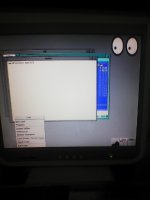gslick
Veteran Member
Even if most users of 80386 systems back in the day only ran DOS programs, one benefit of the 80386 was virtual 8086 mode, which was necessary to run EMM386.EXE. EMM386.EXE provided UMB support, which could provide more free memory for running DOS programs, and it also provide EMS support, if that was needed.
You could also run 32-bit applications on top of DOS using a DOS extender. In my first real software job back in 1988 we used the Phar Lap 386|DOS-Extender to develop a 32-bit protected mode application that ran on top of DOS. The application was basically a port of a workstation application that assumed 32-bit pointers and needed access to more than a MB of RAM to run well. Using a 32-bit DOS extender made the port much easier.
You could also run 32-bit applications on top of DOS using a DOS extender. In my first real software job back in 1988 we used the Phar Lap 386|DOS-Extender to develop a 32-bit protected mode application that ran on top of DOS. The application was basically a port of a workstation application that assumed 32-bit pointers and needed access to more than a MB of RAM to run well. Using a 32-bit DOS extender made the port much easier.

